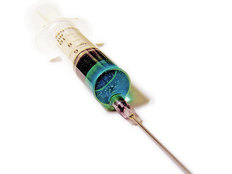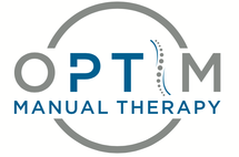- Home
- About Us
- TSPT Academy
- Online Courses
-
Resources
- Newsletter
- Business Minded Sports Physio Podcast
- Day in the Life of a Sports PT
- Residency Corner
-
Special Tests
>
-
Cervical Spine
>
- Alar Ligament Test
- Bakody's Sign
- Cervical Distraction Test
- Cervical Rotation Lateral Flexion Test
- Craniocervical Flexion Test (CCFT)
- Deep Neck Flexor Endurance Test
- Posterior-Anterior Segmental Mobility
- Segmental Mobility
- Sharp-Purser Test
- Spurling's Maneuver
- Transverse Ligament Test
- ULNT - Median
- ULNT - Radial
- ULNT - Ulnar
- Vertebral Artery Test
- Thoracic Spine >
-
Lumbar Spine/Sacroiliac Joint
>
- Active Sit-Up Test
- Alternate Gillet Test
- Crossed Straight Leg Raise Test
- Extensor Endurance Test
- FABER Test
- Fortin's Sign
- Gaenslen Test
- Gillet Test
- Gower's Sign
- Lumbar Quadrant Test
- POSH Test
- Posteroanterior Mobility
- Prone Knee Bend Test
- Prone Instability Test
- Resisted Abduction Test
- Sacral Clearing Test
- Seated Forward Flexion Test
- SIJ Compression/Distraction Test
- Slump Test
- Sphinx Test
- Spine Rotators & Multifidus Test
- Squish Test
- Standing Forward Flexion Test
- Straight Leg Raise Test
- Supine to Long Sit Test
-
Shoulder
>
- Active Compression Test
- Anterior Apprehension
- Biceps Load Test II
- Drop Arm Sign
- External Rotation Lag Sign
- Hawkins-Kennedy Impingement Sign
- Horizontal Adduction Test
- Internal Rotation Lag Sign
- Jobe Test
- Ludington's Test
- Neer Test
- Painful Arc Sign
- Pronated Load Test
- Resisted Supination External Rotation Test
- Speed's Test
- Posterior Apprehension
- Sulcus Sign
- Thoracic Outlet Tests >
- Yergason's Test
- Elbow >
- Wrist/Hand >
- Hip >
- Knee >
- Foot/Ankle >
-
Cervical Spine
>
- I want Financial Freedom
- I want Professional Growth
- I want Clinical Mastery
 To some, cortisone injections are a miracle. The can play a crucial role with adhesive capsulitis, for example. I have had patients that tell me of past injuries that were "healed" with cortisone injections. For those of you unfamiliar with their use, the typical benefit involves reduction of inflammation and/or pain. Sometimes, patients come to you following an injection. Sometimes, they get them during the course of the treatment. And sometimes, patients get the injections as a result of failed physical therapy. That being said, there are several problems with the procedure and its impact on our job. As many of you know, cortisone injections can do an excellent job with pain reduction, but does not do much with any impairments that may have contributed to the original injuries. The issue with this is that patients come to us thinking they are "healed" but their body is still very much at risk for reinjury. When it comes to our testing, some patients are extremely sensitive to even ROM assessment. Coming out of school, I would still do my normal assessment of these patients (ROM, MMT, special tests, etc.) and they would come back in pain. With the patient thinking they have regressed as a result of the evaluation, it's possible the trust in the clinician-patient relationship will be shaken, affecting their prognosis. Some patients, especially with various biopsychosocial factors, may be affected by even the least aggressive stimulation of the affected region. So how do we assess and treat these patients? Personally, I try to keep things as minimal as possible with assessment. I'll usually do a ROM assessment while having the patient keep it in a range that is comfortable. And I'll assess strength of joints away from the affected region. That is typically it for patients after an injection. I'll begin with some lighter manual treatment and exercise to improve the mobility in a non-threatening way. I do absolutely no special tests looking for pain provocation. Once the patient starts moving better, I'll continue with further assessment and progress my treatment. Even in taking these precautions, every once and awhile I'll have a patient that is so hypersensitive that they will have an increase in pain. At that point, it is essential that we educate our patients on pain science in order to calm their nervous system. Personally, I think that cortisone injects can be a very beneficial tool in managing our patients, especially when the pain restricts them from fully participating in rehab. But I would prefer the injections be performed after a trial of therapy in order to not risk the clinician-patient relationship. -Chris
0 Comments
Leave a Reply. |
Dr. Brian Schwabe's NEW Book in partner with PaleoHacks!
Learn residency-level content on our
Insider Access pages We value quality PT education & CEU's. Click the MedBridge logo below for TSPT savings!Archives
July 2019
Categories
All
|








 RSS Feed
RSS Feed